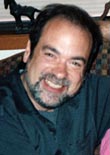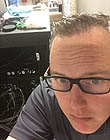|
|
This topic comprises 2 pages: 1 2
|
|
Author
|
Topic: Digital Cinema Audio 101
|
|
|
|
|
|
|
|
|
|
|
|
|
Harold Hallikainen
Jedi Master Film Handler
Posts: 906
From: Denver, CO, USA
Registered: Aug 2009
|
 posted 01-21-2018 02:16 PM
posted 01-21-2018 02:16 PM





A single digital cinema package MAY have multiple soundtracks, though this is rare. Each movie (called a "composition") has a Composition Playlist that tells what files will be played at what time during the playback of the composition. Movies are still broken into reels where each reel has an image file and an audio file that runs about 20 minutes. The CPL ties these all together. There may be multiple CPLs in a digital cinema package. There may be a CPL for 5.1 sound, another for 7.1 sound, etc. DCPs also can carry subtitles and closed captions as separate "timed text" files.
With digital cinema, the storage space and bandwidth are available to use uncompressed audio, so no encoding or compression is required. The standards also try to stay away from proprietary technology as much as possible. Thus, the audio is done as a single file with up to 16 channels in it, with a sample depth of 24 bits and a sample rate of 48 kbps. The standards allow for 96 kbps, but, as far as I know, only one movie has been distributed using 96 k audio.
In a previous post, there was mention of object-based audio such as Dolby Atmos or DTS-X. In a typical "channel-based" audio system, such as 5.1 or 7.1DS, the mixer pans audio fragments to drive combinations of the available speakers or arrays of speakers (surrounds are arrays). The individual feeds to each speaker or array are recorded as 6 or 8 channels of audio. These audio channels are played back in the auditorium to speakers in corresponding locations to reproduce an approximation of what was heard on the dub stage.
In object-based audio, the individual audio fragments (mono audio tracks) along with panning instructions (and other information, such as decorrelation, object-size, etc.) are recorded. In addition, a channel-based mix is also recorded. Most sound is handled in the channel-based mix and then objects are added on top of this "bed." The audio is broken into frames, just as the image is. So, there are typically 24 chunks of audio per second. Each of these chunks are individually playable. They include all the audio and all the metadata necessary to play that chunk. A renderer looks at each bed or object "element" in the frame. This element includes panning instructions, etc. for objects, and includes speaker destinations for the bed. The elements also include "pointers" to the referenced audio elements (mono audio for 1/24 second). There can be a total of up to 128 object elements and bed channels in a frame (assuming 48k audio). In the playback system, a "renderer" evaluates the metadata in the bed and object elements and combines the referenced audio according to those instructions.
Summarizing, in channel-based audio, the speaker feeds are recorded. The recorded feeds are sent directly (with equalization, etc.) to the corresponding speakers. In object-based audio, audio fragments and panning instructions are recorded. The renderer performs the panning instructions on the audio and sends it to the corresponding speakers (typically up to 64 individually driven speakers, but there is technically no limit).
Harold
| IP: Logged
|
|
|
|
Steve Guttag
We forgot the crackers Gromit!!!

Posts: 12814
From: Annapolis, MD
Registered: Dec 1999
|
 posted 01-22-2018 07:10 AM
posted 01-22-2018 07:10 AM




Pair 4, originally, was for LC/RC and pair 8 was for HI/VI. However, early players/systems were only set up for 8-channels (4 pairs) so HI/VI quickly moved to pair 4, forcing LC/RC to move to pair 5 leaving BLs/BRs to take pair 6. Pair 7 seems to have been usurped by proprietary audio control information and pair 8, officially, remains an HI/VI track. So, in a sense, all 16-channel are now spoken for though pair 8 could/should be reassigned and pair 7 should probably be done a better way (not use audio channels for control work). In fact, I think HI/VI shouldn't consume full bandwidth audio channels. They need the quality of a telephone, not a Hi-Fi system.
| IP: Logged
|
|
|
|
|
|
|
|
Bill Brandenstein
Master Film Handler
Posts: 413
From: Santa Clarita, CA
Registered: Jul 2013
|
 posted 01-30-2018 03:33 PM
posted 01-30-2018 03:33 PM




quote: Harold Hallikainen
Thus, the audio is done as a single file with up to 16 channels in it, with a sample depth of 24 bits and a sample rate of 48 kbps. The standards allow for 96 kbps, but, as far as I know, only one movie has been distributed using 96 k audio.
Just for the record, Harold, this looks like a typo; I think you meant to say "sample depth of 24 bits and a sample rate of 48KHz. The standards allow for 96KHz..."
And Harold, having never heard of a movie with so-called high resolution / 96KHz audio, would appreciate the title, if possible!
| IP: Logged
|
|
|
|
Martin Brooks
Jedi Master Film Handler

Posts: 900
From: Forest Hills, NY, USA
Registered: May 2002
|
 posted 01-30-2018 06:26 PM
posted 01-30-2018 06:26 PM





He might be thinking of Blu-ray release. "The Right Stuff" was released with a 96KHz audio sampling rate, but initially, the discs were created at 48KHz. They re-pressed them and if you wrote to them, they sent you a new disc, but frankly, I can't hear any difference between the two versions and I find the sound on this Blu-ray to be quite terrible in any case - it lacks fidelity and impact. It almost sounds as if the tracks came from the Dolby Optical and not from the 70mm 6-track mix.
But aside from the fact that the soundtrack doesn't sound great, there's no reason for it to sound better at 96KHz than 48KHz, because it's very unlikely that there's any audio above 24KHz anyway. And if there isn't, the increased sampling rate will make absolutely no difference.
| IP: Logged
|
|
|
|
All times are Central (GMT -6:00)
|
This topic comprises 2 pages: 1 2
|
Powered by Infopop Corporation
UBB.classicTM
6.3.1.2
The Film-Tech Forums are designed for various members related to the cinema industry to express their opinions, viewpoints and testimonials on various products, services and events based upon speculation, personal knowledge and factual information through use, therefore all views represented here allow no liability upon the publishers of this web site and the owners of said views assume no liability for any ill will resulting from these postings. The posts made here are for educational as well as entertainment purposes and as such anyone viewing this portion of the website must accept these views as statements of the author of that opinion
and agrees to release the authors from any and all liability.
|

 Home
Home
 Products
Products
 Store
Store
 Forum
Forum
 Warehouse
Warehouse
 Contact Us
Contact Us




 Printer-friendly view of this topic
Printer-friendly view of this topic












